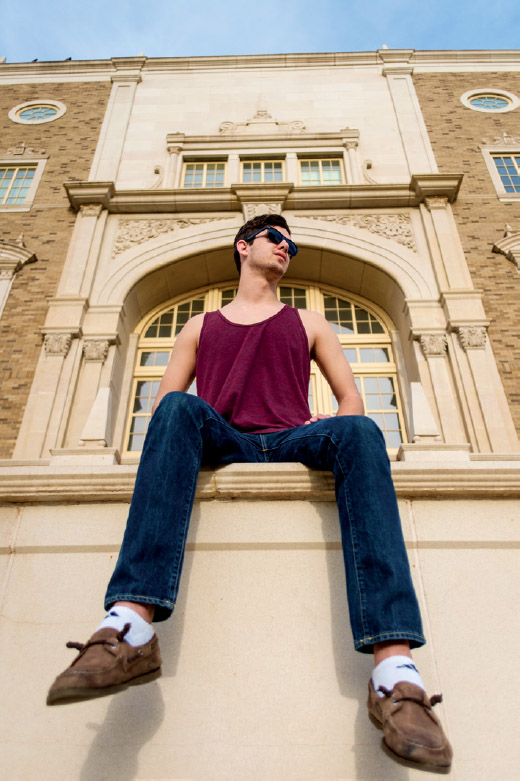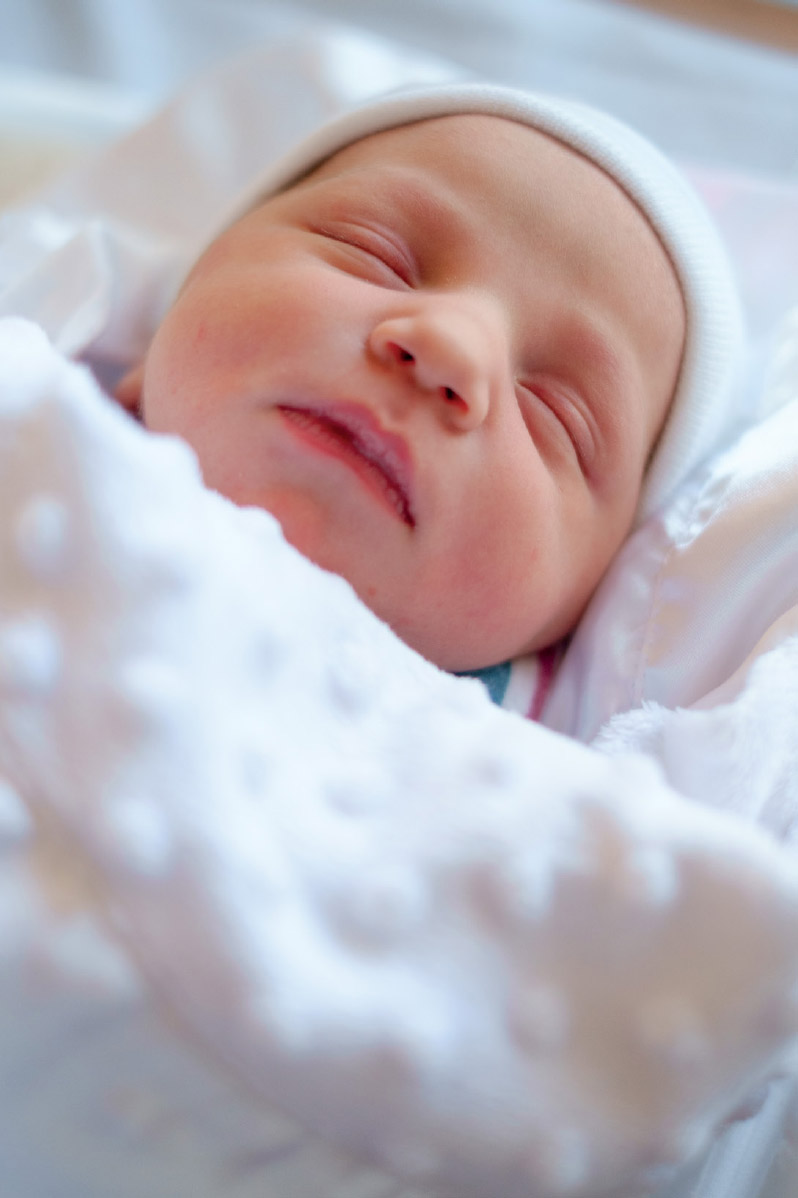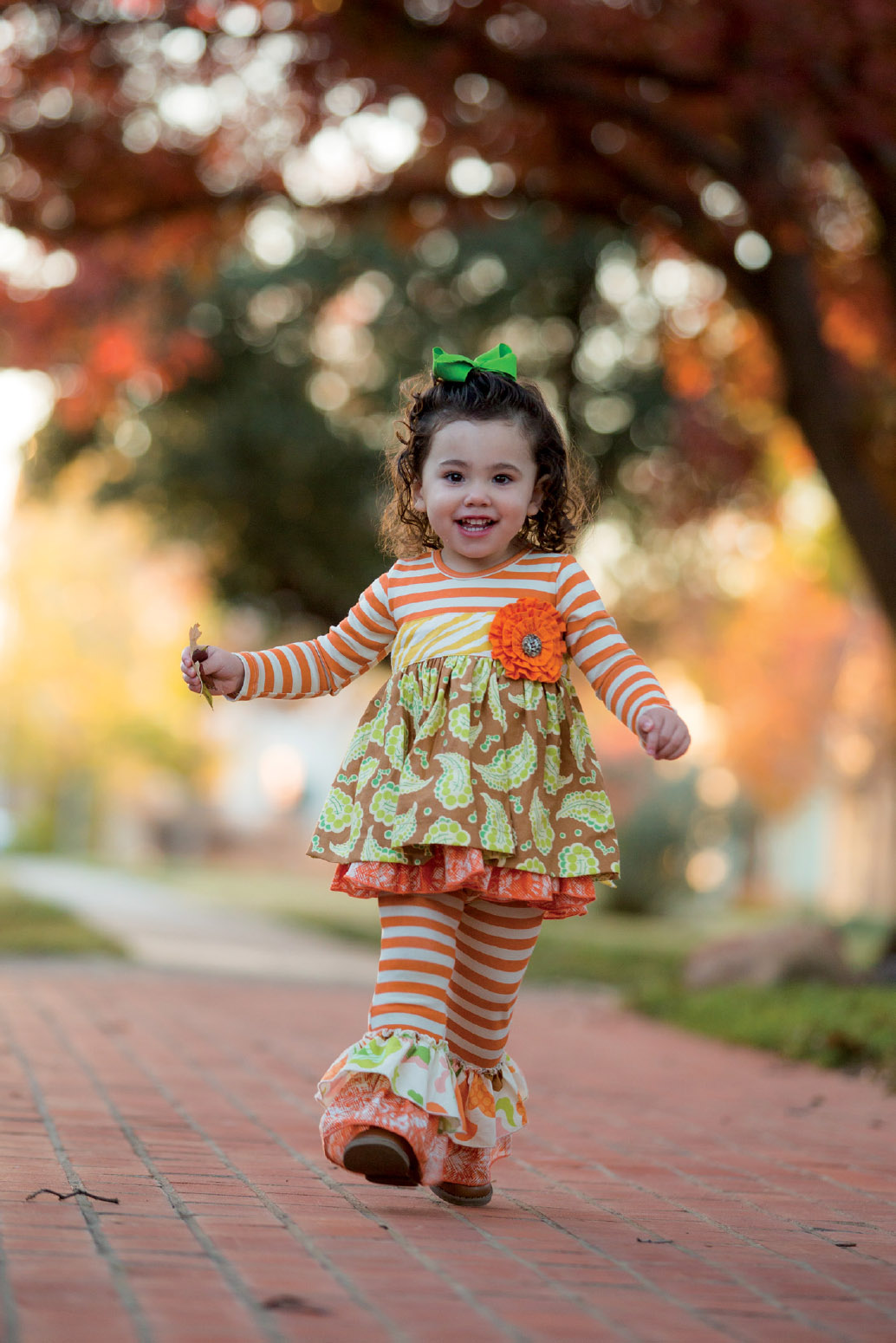29. CHECK YOUR ANGLE
![]()
THERE’S QUITE A bit about photography that has interpretive value. The height, or angle, from which you photograph your portrait subject can often convey subjective characteristics about him. Subjective as it may be, the angle of a portrait does typically imply certain meanings that should be well considered when photographing people.
Shooting from a lower angle than your subject has several effects (Figure 29.1). First, it visually makes your subject appear taller and generally larger. The second you dip below your subject’s eyeline, you position the image viewer under her. This effect is heightened as your focal length becomes wider. And, as discussed in the previous tip, going too wide will extremely distort your subject. Shooting with an extremely wide-angle focal length from well below your subject is a quick way to make them look like a giant with legs a mile long. Let this be a warning that not everyone enjoys that look.
Subjectively, shooting from below also implies the subject has power (Figure 29.2). Looking up toward the subject can capitalize on his respectful authority in the workplace and convey an intimidating characteristic about him. Again, the lower the angle, the more powerful the subject will seem.
Consequently, shooting from a high angle forces the viewer to look down on the subject (Figure 29.3). Although this does not necessarily make the subject look shorter, it does reduce the ability to see much of her form. Having someone look up into the camera can help slim the size of a subject’s face and neck (Figure 29.4). Of course, the more you have the subject look up, the potential for a cricked neck and an awkwardly angled image increases.
29.1 The low angle and wide focal length combines to create a larger-than-life visualization of the subject.
ISO 200; 1/2900 sec.; f/2; 18mm
29.2 When on assignment photographing Marcus Luttrell, known for his service as a Navy SEAL and author of Lone Survivor, I created several portraits of him from slightly below, conveying the amount of power, and slight intimidation, he exhibits. It didn’t hurt that he was a bit taller than I am, either.
ISO 100; 1/2500 sec.; f/2.8; 175mm
29.3 Photographing down on a subject is a good way to show off context when the subject is sitting, as well as to reduce any aggressive characteristics conveyed by shooting under the subject.
ISO 200; 1/40 sec.; f/4; 58mm
29.4 Photographing your subject from a slightly higher angle is a good way to use the head and chin to reduce the view of any blemishes or unflattering features in the subject’s neckline.
ISO 100; 1/500 sec.; f/2.8; 70mm
However, shooting from a higher angle on the subject can meaningfully imply that she is somewhat inferior. When the viewer is looking down on the subject, he can sometimes be looking down on the subject (Figure 29.5). The subject can be made to look as if they lack the benevolent power the viewer maintains (think about some third world country charity images), or weak in the eyes of a captor or judge. Either way, shooting from a high angle can often imply a negative characteristic about your subject, one that may be unfair or disadvantageous to their reality. Personally, I’m not a fan of shooting from higher angles outside headshots and environmental portraits that must showcase an expanse of environment.
A common angle sometimes overlooked in discussion is the eyeline. Shooting from an angle that matches the viewer’s eye with those of the subject is effective because we immediately engage with a subject whose eyes are at a natural level related to our own viewpoint. It also gives us a greater sense of their space and how they occupy it. For example, a child photographed from above is simply a child photographed from above, leaving the ground to become the background to the subject. However, the moment you photograph the child on her level—which often necessitates getting on the ground with her—you are now in her world (Figure 29.6). This is a world that we often don’t contemplate because we’re conditioned to look down on the child. Especially when working with subjects that are either taller or shorter (for whatever reason) than you, work to shoot portraits of them at their eye level, and the interest factor of your images will increase.
Finally, bear in mind that the subjective nature of the angle from which you shoot your portrait is largely a result of who your subject is and how he otherwise appears in the shot. Image viewers are incredibly discerning and they can tell the difference between a shot of a corporate manager photographed from slightly below and a staged shot of a mob boss. However, it’s worth assessing your angle before you make portraits to insure the appropriate message.
29.5 One way to show the innocence and powerlessness of a newborn is to photograph down on her.
ISO 400; 1/280 sec.; f/1.4; 35mm
29.6 Getting on my daughter’s level made for a much more engaging action portrait than if I was shooting the same thing from above at the same focal length. This angle puts you in her world.
ISO 400; 1/320 sec.; f/2.8; 145mm






